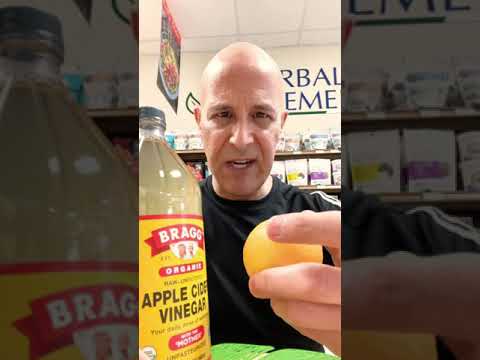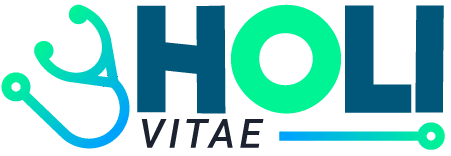
Allergies, right? Ugh, they can really mess up your day. You wake up, the sun’s shining, and then—boom! Sneezing like crazy, itchy eyes, and that annoying runny nose. It’s like your body decided to throw a party without inviting you.
So, what gives? That’s where clemastine comes in. This little gem is here to help you tackle those pesky allergy symptoms and hopefully get you back to enjoying life again.
Imagine walking outside, breathing in that fresh air without feeling all stuffy and miserable. Sounds pretty great, huh? Let’s dive into how clemastine can be your go-to buddy for kicking those allergies to the curb!
Evaluating the Safety of Clemastine for Children: Essential Insights for Parents
So, you’re wondering about clemastine? You’re not alone! This antihistamine is often talked about when it comes to dealing with pesky allergies and hay fever. But what if you have kids? That’s a whole different ball game, right?
Clemastine is like a superhero for your nose. It helps block those annoying allergy symptoms like sneezing and runny noses. However, when it comes to children, there are some things you definitely want to consider.
- Ages Matter: The safety of clemastine can depend on how old your child is. For younger kiddos, using any medication should always be looked at with extra caution.
- Dose Responsiveness: Kids aren’t just small adults. The way they react to medicine can be different. Dosage needs to be more carefully calculated based on weight and age.
- Side Effects: While most of us are familiar with drowsiness from antihistamines, some kids might experience other reactions—like restlessness or irritability. Yikes!
- Consult the Pros: Always, always talk to your child’s doctor before starting any new medication — even something as common as clemastine.
I remember when my friend’s little one had allergies really bad one spring. They tried all sorts of stuff until they landed on an antihistamine that worked—but it was definitely a process! It’s so important for parents to find what works best without taking unnecessary risks.
Just keep in mind that while clemastine can help with allergy symptoms, it’s not always suitable for every child. So don’t skip that chat with your healthcare provider! Seriously—it’s key for keeping everyone healthy and happy.
If you have more questions about this or anything else health-related, feel free to ask around! Just don’t substitute online info for solid medical advice from a professional!
Is Cetirizine Safe for Children? A Comprehensive Guide for Parents
Cetirizine is an antihistamine that can help with allergies, and you might be wondering if it’s safe for your kids. Well, guess what? Most of the time, it is! But let’s break this down so it’s super clear.
When kids have allergies, they can get all sniffly and itchy. Cetirizine helps in reducing those annoying symptoms like sneezing or a runny nose. But before you rush to give it to your little ones, there are a few things to keep in mind:
- Age is key: Cetirizine is usually safe for children aged 2 and up. If your child is younger than that, you really should check with a healthcare professional.
- Dosage matters: You’ve got to follow the recommended dose for their age and weight. Too much isn’t good for anyone, right?
- Side effects: Like any medication, cetirizine can have possible side effects. Some kids may feel sleepy or a bit restless after taking it. Keep an eye on how they react.
- Mixing medications: If your child is already on other meds, give their doctor a shout before adding cetirizine to the mix.
- Sensitivity: Some kids just don’t do well with certain medications. If you notice any strange reactions after taking it, call the doctor.
So, here’s a little story: My friend Sara had her son Adam who was always sneezing in springtime—poor kid! After checking with the pediatrician, they gave him cetirizine, and it changed everything! He could finally play outside without looking like he needed a nap every five minutes! But remember: not every kid will respond the same way.
Always chat with your healthcare provider about trying new medications for your children. They know best what fits your child’s needs and health conditions.
In short (well kinda!), cetirizine can be a safe option for many kids when used correctly and under supervision. Just stay informed and cautious!
Is It Safe to Take Clemastine During Pregnancy? Key Considerations and Risks
So, you’ve got allergies and you’re pregnant? That can be a bit tricky! Clemastine is an antihistamine that’s often used for sneezing, runny nose, and those annoying itchy eyes. But when you’re expecting, you definitely want to be careful about what you’re putting in your body.
Safety First: The thing is, not all medications are considered safe during pregnancy. Some have not been studied enough in pregnant women. Clemastine falls into this category. There isn’t a whole lot of solid evidence about how it affects pregnancy or the baby.
Potential Risks: Some studies suggest that taking antihistamines during early pregnancy could be linked to certain risks. It doesn’t mean it will happen to everyone, but it’s something to think about for sure! And while Clemastine isn’t thought to cause major issues, it might not be the best choice for everyone.
- Consult Your Doctor: Seriously, always check with your healthcare provider before taking any medication.
- Natural Alternatives: If you can manage symptoms without meds—like using saline nasal sprays or steam inhalation—those might be safer!
- Your Body Changes: Hormones during pregnancy can also change how your body reacts to allergens so maybe your usual remedies won’t even work the same!
- Keep Hydrated: Drinking plenty of water can help reduce some allergy symptoms naturally.
I remember when my friend was pregnant and struggling with allergies. She decided to go the natural route and found some success with honey! It’s amazing how sometimes the simplest things can help.
At the end of the day, just keep in mind that while Clemastine may provide relief from those pesky allergy symptoms, safety is key when you’re expecting. So always prioritize talking to a professional!
Availability of Clemastine in the US: What You Need to Know
So, you might be wondering about Clemastine and its availability in the US, especially if allergies are making your life a bit, well, miserable. Let’s dive into it!
Clemastine is an antihistamine, you know? It helps relieve symptoms of allergies and hay fever like sneezing, runny nose, and itchy eyes. You might recognize it more by the brand name Tavist. It’s been around for a while now. That’s something to feel good about!
Now, as for its availability—you can usually find clemastine over-the-counter at pharmacies. But let me tell you, not every store stocks it all the time. It can vary from one place to another! So if you’re planning a trip to grab some, you might wanna call ahead.
- It’s typically available in tablet form.
- Some brands may offer liquid options too.
- It often comes in combination with other medications for extra relief.
If you’re in the market for it but can’t find clemastine right away, don’t stress too much. There are other antihistamines out there that could help ease your symptoms temporarily until you spot what you need. Just remember that this info isn’t meant to replace real professional healthcare—always consult with a healthcare provider if you’re unsure about what’s best for you.
And hey! The next time allergy season hits hard and you’re feeling overwhelmed, just know that there’s relief out there waiting for you. Whether it’s clemastine or something else, you’ve got options! Stay safe and sneeze-free out there!
Ah, allergies. They can really take the fun out of spring, can’t they? You know that feeling when you step outside, a gentle breeze blows, and then—boom!—your eyes start itching like crazy, you can’t stop sneezing, and you’re pretty much a mess. I mean seriously, who enjoys that? That’s where Clemastine comes in.
So, what’s Clemastine? Well, it’s an antihistamine that helps clear up those annoying allergy symptoms. Think of it like a superhero swooping in to save the day when pollen goes wild or when pet dander decides to crash your party. When you take it, it helps block histamines – those little troublemakers in your body that cause all sorts of chaos when allergens are around.
I remember one time I decided to go on this hiking trip with friends during peak birch pollen season—oh boy. The first few hours were magical; the smell of fresh air and flowers was amazing! But then my nose started running like a faucet and my eyes were watering like I just watched the saddest movie ever. You can picture me at that moment: red-nosed and teary-eyed while trying to enjoy nature’s beauty. Not fun!
And here’s where Clemastine came to rescue me from my misery. After I took it, things started looking up! My sneezing fits subsided—it was like someone turned down the volume on my allergy issues. I could finally breathe normally and enjoy the great outdoors again! It’s moments like these we really appreciate how effective something simple can be.
But remember: while Clemastine can be great for relief from those pesky allergy symptoms—like any medicine—it doesn’t work for everyone or in every situation. And hey, always check with a healthcare pro if you’ve got questions or concerns about using it because we all have different bodies and needs.
So next time you feel those springtime allergies creeping in, think about giving Clemastine a shot (after chatting with someone who knows more about meds than your average Joe). It could just help make your days way more enjoyable!
